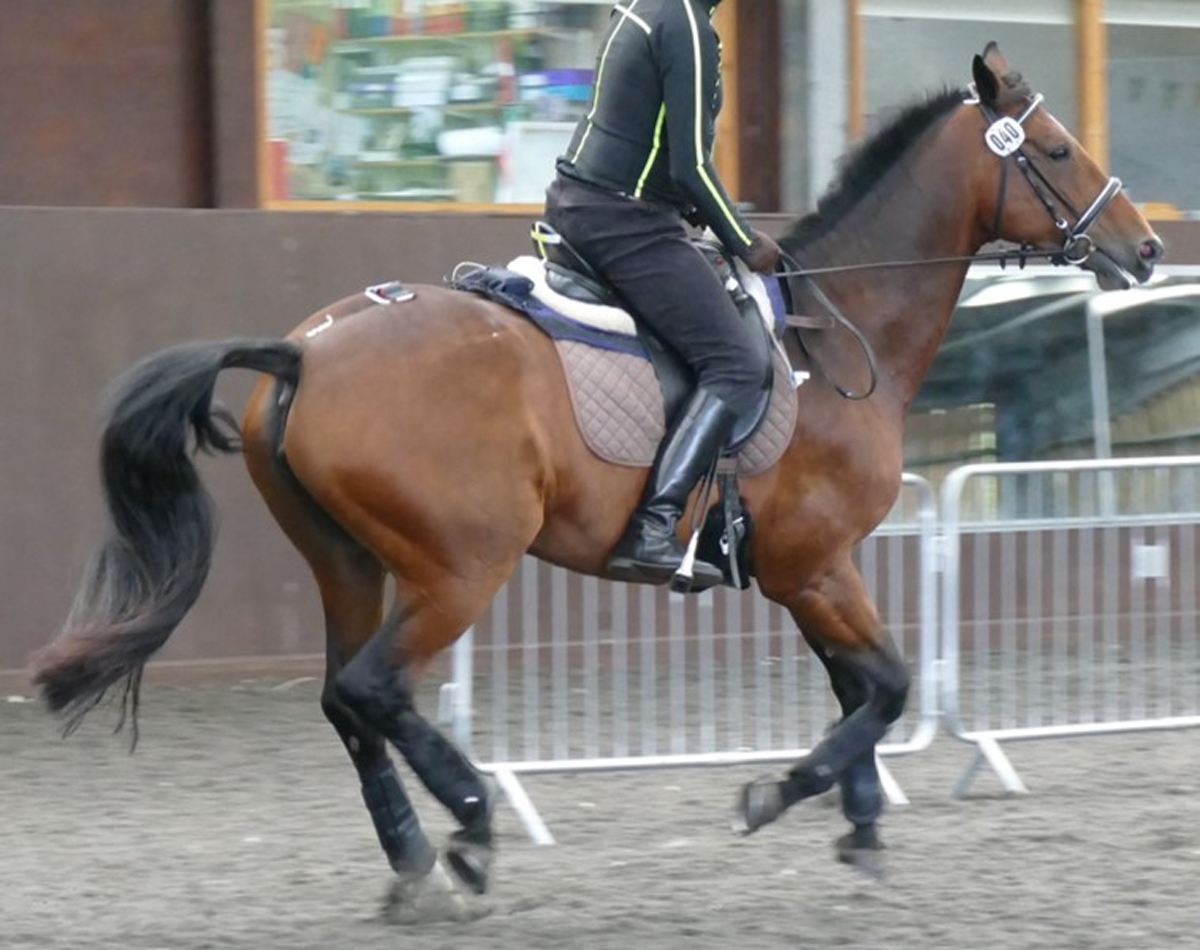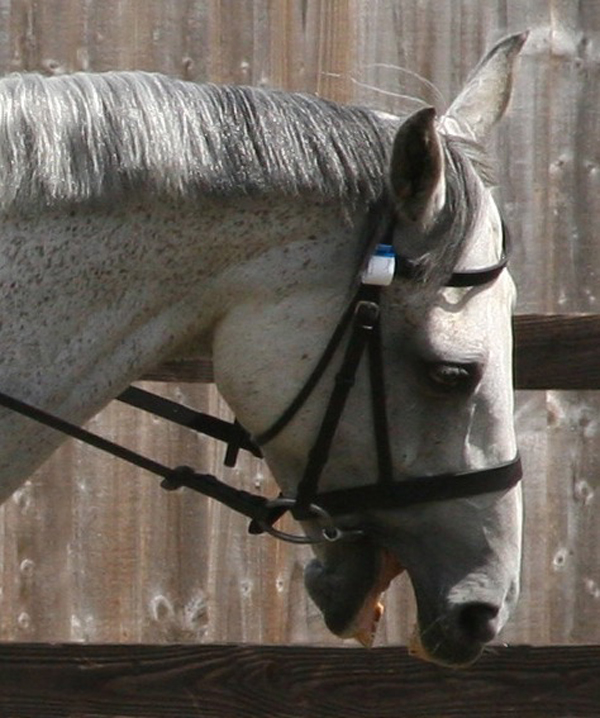
Dr. Sue Dyson
The latest work on pain-associated behavior in ridden horses, from two illuminating studies, was presented by Dr. Sue Dyson at the Saddle Research Trust Conference on December 8, 2018. While one paper showed how heavier riders and unsuitable saddles can cause back muscle tension and pain in the horse, another disclosed that the ability to spot initial signs of musculoskeletal pain is now within the grasp of both trained and untrained assessors. Together the studies give the equestrian world better knowledge and tools to enhance the welfare and performance of ridden horses.
Dyson, Head of Clinical Orthopedics at the Centre for Equine Studies at the Animal Health Trust, was one of 15 eminent international vets, scientists and special guests presenting at the packed-out Saddle Research Trust Conference on the theme of “Horse, rider, saddlery interactions: Welfare and Performance” at Nottingham University’s De Vere Conference Centre.
The pilot study, “The influence of rider size and saddle fit on equine gait, behaviour, response to thoracolumbar palpation and thoracolumbar dimensions” builds on previous work that has shown high rider body weight:horse body weight ratios, or a tall, heavy rider in a saddle that is too small, can cause temporary lameness and discomfort.
Gait, behavior, signs of stress, forces under the saddle, responses to palpation of the thoracolumbar part of the back and changes in back dimensions were assessed in horses ridden by four riders of similar ability, but different body weights.
Saddle fit was not ideal for the heavy and very heavy riders, which influenced force distribution and magnitude, a commonly observed clinical scenario. Both riders had to sit on the back of their saddles, rather than in the middle, in order to accommodate their size and height on the space available. This altered pressure distribution, especially for the very heavy rider.
There was a correlation between rider weight and mean peak pressures under the saddle, with the heavier riders inducing greater pressures. Thoracolumbar dimensions were measured using a flexible curve ruler before and after exercise. While the mean thoracolumbar width increased with the light and medium riders, a normal response, the width decreased with the heavy and very heavy riders. This was also associated with an increase in back muscle tension for the heavy rider and increased muscle pain for the very heavy rider.
Dyson was keen to point out that the studies should not be interpreted as implying heavy riders should not ride. She said, “The key is to ride a horse of suitable size and fitness and to make sure that the saddle is fitted correctly for both horse and rider to minimize potential for pain and loss of performance.”
Identifying low-grade lameness can be challenging, with owners, riders and trainers appearing to have a poor ability to recognize signs of pain when horses are ridden. As a result, problems are labelled as training-related, rider-related, behavioral, or ‘that is just how the horse has always gone.’ Consequently pain-related problems often get progressively worse and, if ultimately presented for investigation, the problems might be too chronic to manage satisfactorily.
Equine Ethograms
Dyson’s second presentation showed that even without training, it is possible for an assessor to use an ethogram based on 24 ridden behaviors to assess pain and lameness in ridden horses. Part of the study, “Application of a ridden horse ethogram to video recordings of 21 horses before and after diagnostic analgesia: reduction in behaviour scores,” expands on the initial work to develop a ridden horse ethogram comprising 24 behaviors that are more likely to be seen in lame horses compared with non-lame horses. The presence of eight or more behaviors is likely to reflect the presence of pain.

The ethogram was applied to video recordings of 21 horses by a single trained experienced analyst and 10 people who had not undergone specialist training in equine behavior. The results for the lame horses were compared before and after musculoskeletal pain had been substantially improved using diagnostic analgesia.
While the untrained assessors generally awarded a higher number of behaviors exhibited by the lame horses than the trained assessor, for all observers there was a highly significant decrease in overall behavior scores after diagnostic analgesia.
“Encouragingly, this study shows that the ethogram can be used by both trained and non-trained assessors,” said Dyson. “However, training of assessors is required for accurate interpretation of all features of the ethogram.”
The clearly measurable changes in behavior after abolition of musculoskeletal pain provide strong evidence of a causal effect, indicating that the ethogram is not only a good tool for recognition of the presence of musculoskeletal pain, but it is also a potentially good tool for monitoring longitudinal progress after treatment.
“Pain in horses has always been elusive because, in their capacity as flight animals, they will naturally conceal it to hide weakness or vulnerability,” said Dyson. “As our knowledge of the ridden horse’s inherent weight-bearing capacity increases, the ethogram presents a useful monitoring tool: horses in pain may be silent, but behavior is their voice, and we need to listen and be receptive.”
The Saddle Research Trust Conference is sponsored by World Horse Welfare and WOW Saddles. Selected highlights from the Conference will become available on the website in stages. For further information visit www.srt2018.com.
About The Saddle Research Trust
The Saddle Research Trust was founded in 2009 to promote the welfare of the ridden horse by raising awareness of the widely underestimated issues surrounding the interactions between horse, saddle and rider, by educating and informing the stakeholders within the equine industry–riders, coaches, horse owners, professional healthcare practitioners, saddle professionals and other welfare organizations, and by supporting scientific research, the translation of scientific research, and the dissemination of information.
Trust Director, Dr. Anne Bondi, BHSI, was awarded a doctorate in 2017 for her novel research of horse, saddle and rider interaction. She teaches world-wide, giving lectures and presentations to a wide range of groups, including equine healthcare practitioners, saddle fitters, coaches and equine science students, sharing her passion for this complex but fascinating subject.


